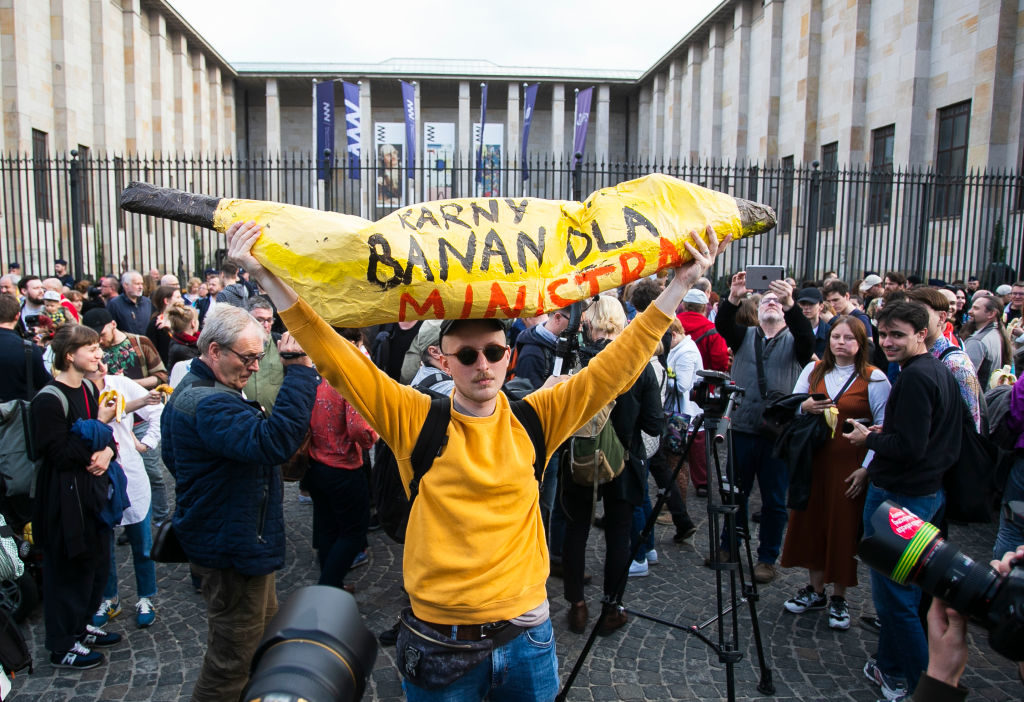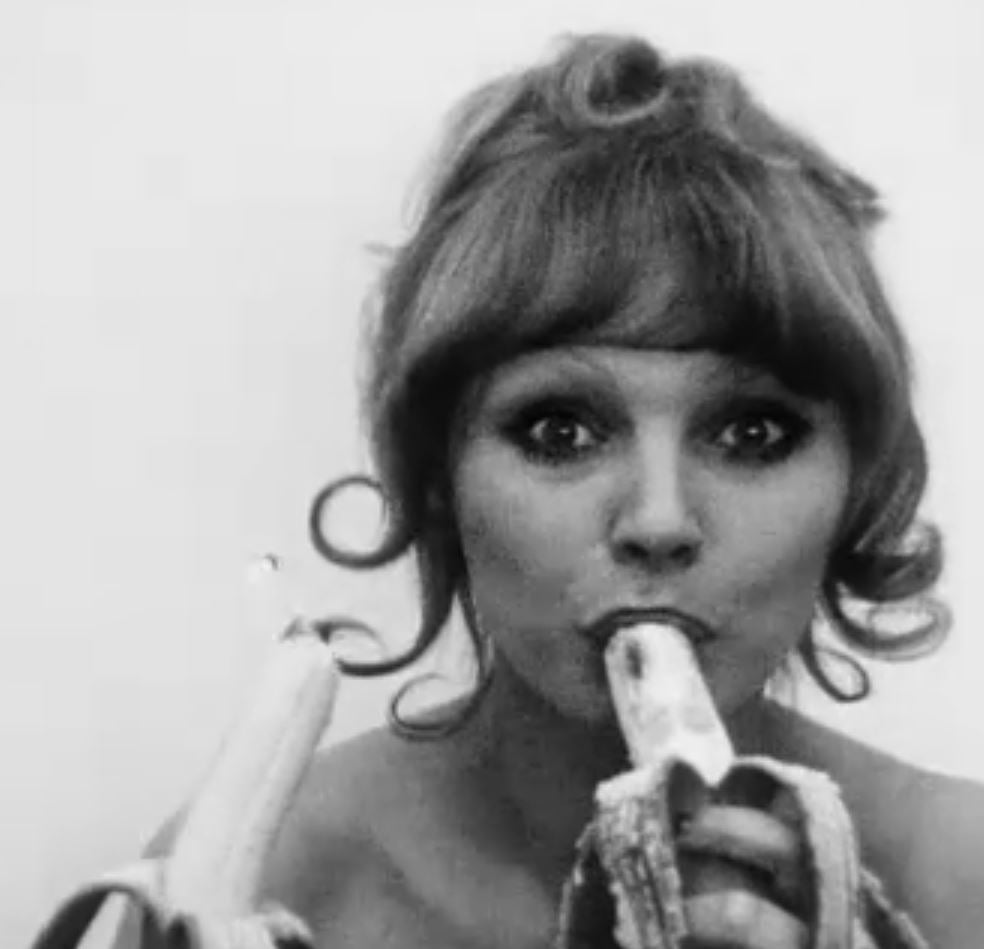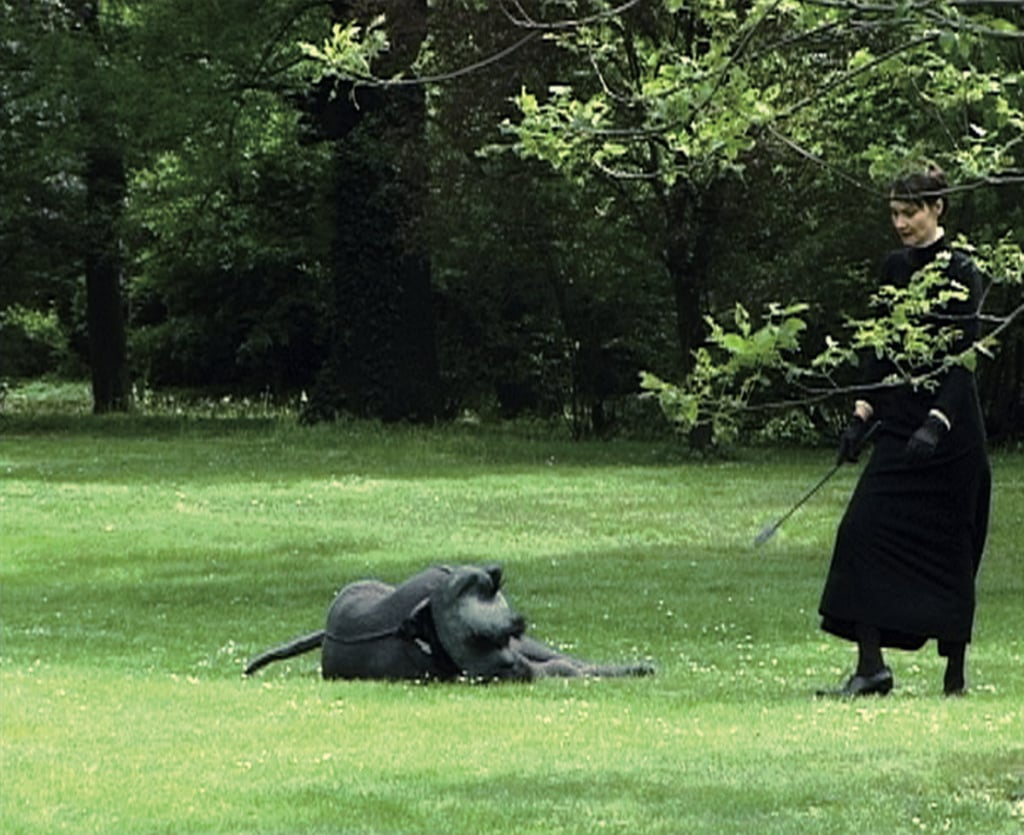Politics
A Polish Museum Censored a Feminist Artist’s Phallic Work. Then a Banana-Eating Army of Protesters Stepped In
Prominent figures including Claire Bishop and Paulina Ołowska have signed an open letter admonishing the museum.

Prominent figures including Claire Bishop and Paulina Ołowska have signed an open letter admonishing the museum.

Hili Perlson

In Poland, the simple act of eating a banana has become a subversive act of protest. And that protest successfully persuaded Warsaw’s National Museum to return censored works of feminist art to public view—at least for now.
The trouble began on Friday, April 27, when the Polish press published reports that three works by female artists had been removed from the permanent collection galleries at the National Museum in Warsaw. Among them was the seminal work by avant-garde Polish feminist image-maker Natalia LL, Consumer Art (1972). The photographic series shows a model suggestively eating foods such as a banana or a hot dog, making a humorous comment on hyper-sexualized female stereotypes in the media.
According to reports, the new head of the institution, Jerzy Miziołek, had decided to remove the works in question from view after being summoned by the country’s ministry of culture. A spokesperson for the ministry said that they do not interfere with the museum’s activities, but can demand an explanation for the institution’s decisions when they see fit. The spokesperson claimed that the ministry had received a complaint by a mother who had visited the exhibition with a young child and found the works inappropriate, local press reported.
Miziołek, who was appointed to the position by Poland’s right-wing government, defended his decision to remove the works. “Certain topics related to gender shouldn’t be explicitly shown,” he told Polish newspaper Gazeta Wyborcza.

Still from Natalia LL’s “Consumer Art.” Courtesy of TPM Art Museum.
The pushback was immediate. Since Friday, Poles have been posting images of themselves eating bananas, with the hashtag #bananaselfie spreading rapidly on social media. A Facebook event calling for a protest in front of the museum on Monday, April 29, lists over 7,000 attendees. Deutsche Welle reports that hundreds of protesters gathered to eat bananas in front of the museum yesterday.
The uproar seems to have worked—if only temporarily. The museum released a statement on Monday saying that the artworks would be returned to the galleries where they have been hanging for the last six years, and will remain there until May 5, when a rehang of the collection had already been scheduled to begin. In the statement, Miziołek denies that he had been summoned by the Ministry of Culture, and insists that all decisions were his alone. It is not clear whether the works in question will be part of the museum rehang after May 5.
Natalia LL is considered a pioneer of feminist conceptualism and body art in the Polish avant-garde movement of the early 1970s. Her video and photographic works deal with issues relating to gender inequality and the oppression of women. Her artworks are in the collections of several museums across Poland, as well as Germany and France. Born in 1937, she is still producing photographic works.

Katarzyna Kozyra, Lou Salome in Vienna, (2005). © the artist. Courtesy ŻAK | BRANICKA, Berlin.
Also censored was the German-language video The Appearance of Lou Salome (2005) by Katarzyna Kozyra, originally commissioned for an exhibition at the Kunsthalle Wien in Vienna, and Part XL. Tele Game (2005) by artist duo Aleksandra Kubiak and Karolina Wiktor. Part XL shows a performance that took place on a live TV broadcast in which viewers could call in anonymously and tell the artists what to do. The actions demanded of them quickly became sexual and violent.
Poland has become more conservative since the ruling far-right party in Poland, PiS, aligned itself with the church in 2015 to win a majority in parliament. Since then, the government has increasingly promoted nationalistic views in the country’s cultural institutions and replaced many directors in key positions to reshape the cultural landscape. Anti-abortion rhetoric is also on the rise in the country, which already has one of the strictest abortion laws in the European Union.
In the wake of the controversy, dozens of art-world figures—including art historian Claire Bishop, Kunsthalle Zürich director Daniel Baumann, curator Catherine Morris, artist Paulina Ołowska, and dealer Magda Sawon—signed a letter criticizing the censorship and encouraging the museum to keep the works on view after the rehang.
“We oppose censorship of culture and interference with artists’ right to freedom of expression and the right of the viewers to unrestricted choice regarding art they can see at art institutions and its interpretation,” the letter reads. “Acts of censorship deprive artists of the freedom of expression and in this case also deprive women of their voice. We express our hope that in the new arrangements of the gallery… the works by women, including feminist artists, will not be censored but will be shown in its fully deserved place.”